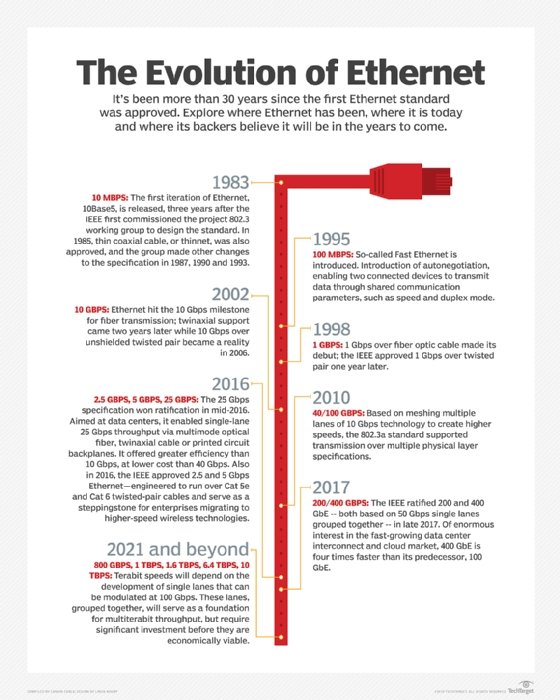IEEE 802.3
What is IEEE 802.3?
802.3, or IEEE 802.3, is a working group of standard specifications for Ethernet, a method of packet-based physical communication in a local area network maintained by the Institute of Electrical and Electronics Engineers (IEEE).
It defines a physical layer and a data link layer for media access control, or MAC address, for a wired, fast Ethernet network connection. These physical connections are made between nodes or devices such as routers, switches and hubs via copper or fiber cables.
In general, IEEE 802.3 standards specify the physical media and the working characteristics of Ethernet. However, there are many variations of this standard used today.

What are the most popular communication standards for IEEE 802.3?
The first Ethernet standards to be defined support a data rate of 10 megabits per second (Mbps). Today, there are many variations of 802.3 in use. The following are several examples.
- 3 - 10BASE5: Thick wire coaxial cable with a maximum cabling length of 500 meters. This is based on the CSMA/CD process.
- 3a - 10BASE2: Thin wire coax cable that uses Bayonet Neill-Concelman (BNC) connectors, with a maximum cabling length of 185 meters.
- 3i - 10BASE-F: Optical fiber Ethernet cables.
- 3i - 10BASE-T: Ordinary telephone twisted-pair wire that uses unshielded twisted-pair (UTP) cables as its physical layer, and fiber optic cables as a transmission medium. Additional variations include IEEE 802.3u and 100BASE-TX.
- 3b - 10BROAD36: Broadband multi-channel coaxial cable with a maximum segment length of 3,600 meters.
- 3bt: Third-generation power over Ethernet (POE) that uses four pairs of twisted-pair cables to support IoT applications.
- 3x - Full-Duplex: Provides Flow control and includes DIX framing.
The "10" in the media type designation refers to the transmission speed of 10 Mbps.
The "BASE" refers to Baseband signaling, which means that only Ethernet signals are carried on the medium (or, with 10BROAD36, on a single channel in a shared cable).
The "T" represents twisted-pair; the "F" represents fiber optic cable; and the "2," "5" and "36" refer to the coaxial cable segment length in 100-meter sections (the 185-meter length has been rounded up to "2" for 200).
For more information on this topic, see our 100BASE-TX and gigabit Ethernet definitions.







